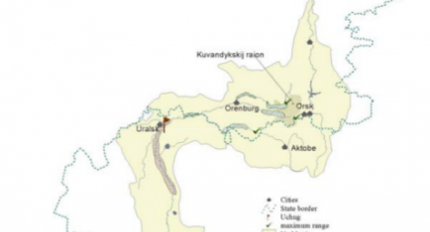Документы
В этом разделе представлены общедоступные документы и файлы, загруженные заинтересованными сторонами и хранителями окружающей среды Каспийского моря.
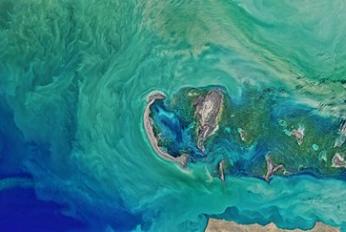 The Legal Status of the Caspian Seaпн, 04/23/2018 - 19:33The presented book represents an attempt to identify comprehensive solution to the problem of the international legal status of the Caspian Sea. The unclear legal situation of the Caspian Sea and the consequent uncertainty of the coastal states about the issue of territorial demarcation, their uncertainty about the extent of
The Legal Status of the Caspian Seaпн, 04/23/2018 - 19:33The presented book represents an attempt to identify comprehensive solution to the problem of the international legal status of the Caspian Sea. The unclear legal situation of the Caspian Sea and the consequent uncertainty of the coastal states about the issue of territorial demarcation, their uncertainty about the extent of
- Описание
The presented book represents an attempt to identify comprehensive solution to the problem of the international legal status of the Caspian Sea. The unclear legal situation of the Caspian Sea and the consequent uncertainty of the coastal states about the issue of territorial demarcation, their uncertainty about the extent of their sovereign rights to the exploitation of natural resources and the uncertainty of the neighboring states with regard to shipping in the Caspian prevent continuous economic development of the region, destabilize political situation and result in a lack of security in the Caspian region. These issues are not merely of regional, but of a global importance. This is the way the research is being continued by scientist all over the world.
- Attached documents
- Metadata
- Год
- 2015
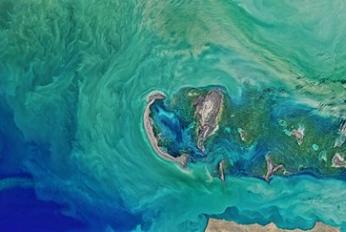 The Caspian Sea Encyclopediaпн, 04/23/2018 - 19:29“The Caspian Sea Encyclopedia” is the second one in the new series of encyclopedias about the seas of the former Soviet Union published by Springer-Verlag. The first volume – “The Aral Sea Encyclopedia” was published by Springer in 2009. The series will be continued by “The Black Sea Encyclopedia” in 2010.
The Caspian Sea Encyclopediaпн, 04/23/2018 - 19:29“The Caspian Sea Encyclopedia” is the second one in the new series of encyclopedias about the seas of the former Soviet Union published by Springer-Verlag. The first volume – “The Aral Sea Encyclopedia” was published by Springer in 2009. The series will be continued by “The Black Sea Encyclopedia” in 2010.
- Описание
“The Caspian Sea Encyclopedia” is the second one in the new series of encyclopedias about the seas of the former Soviet Union published by Springer-Verlag. The first volume – “The Aral Sea Encyclopedia” was published by Springer in 2009. The series will be continued by “The Black Sea Encyclopedia” in 2010.
- Attached documents
- Metadata
- Год
- 2010
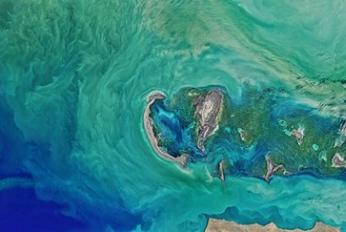 Article - Assessing the sensitivity of Caspian Kutum - Rutilus kutum- and the endangered Caspian trout - Salmo trutta caspius - to acute toxicity of nonylphenolпн, 04/23/2018 - 19:24Toxicity tests are commonly used as a tool to determine the standards of water quality for chemicals and to discover appropriate organisms as bioindicators in toxicological studies, and also could be used as an essential tool for evaluation of the pollutant effects in aquatic ecosystems. The aim of the present study was to e
Article - Assessing the sensitivity of Caspian Kutum - Rutilus kutum- and the endangered Caspian trout - Salmo trutta caspius - to acute toxicity of nonylphenolпн, 04/23/2018 - 19:24Toxicity tests are commonly used as a tool to determine the standards of water quality for chemicals and to discover appropriate organisms as bioindicators in toxicological studies, and also could be used as an essential tool for evaluation of the pollutant effects in aquatic ecosystems. The aim of the present study was to e
- Описание
Toxicity tests are commonly used as a tool to determine the standards of water quality for chemicals and to discover appropriate organisms as bioindicators in toxicological studies, and also could be used as an essential tool for evaluation of the pollutant effects in aquatic ecosystems. The aim of the present study was to evaluate the sensitivity of two Caspian fish species, Caspian trout as an endangered species and Caspian Kutum using the static acute toxicity in response to nonylphenol, which is widely discharged into the Caspian Sea environment.
In addition, Caspian trout was approximately 6 times more sensitive than Caspian Kutum. Nonylphenol was reflected to be "highly toxic" to Caspian trout and "moderately toxic" to Caspian Kutum. The results could be considered in preparing plans for conservation and restocking management of Caspian Kutum and the endangered Caspian trout.
- Attached documents
- Metadata
- Год
- 2013
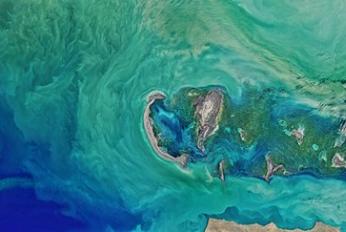 Article - Effects of Caspian Sea water level fluctuations on existing drainsпн, 04/23/2018 - 19:18This study is an attempt to develop an integrated methodology to predict the impact of the Caspian Sea on flooding using Geographic Information Systems (GIS) and hydrodynamic modeling. A rise in the sea level might lead to major flooding events, and have a severe impact on the spatial development of cities and regions. The f
Article - Effects of Caspian Sea water level fluctuations on existing drainsпн, 04/23/2018 - 19:18This study is an attempt to develop an integrated methodology to predict the impact of the Caspian Sea on flooding using Geographic Information Systems (GIS) and hydrodynamic modeling. A rise in the sea level might lead to major flooding events, and have a severe impact on the spatial development of cities and regions. The f
- Описание
This study is an attempt to develop an integrated methodology to predict the impact of the Caspian Sea on flooding using Geographic Information Systems (GIS) and hydrodynamic modeling. A rise in the sea level might lead to major flooding events, and have a severe impact on the spatial development of cities and regions. The feasibility of simulating a flood event along a drain channel is evaluated near residential development areas along the Chapakroud drain.
The study shows that at these elevations environmental and social problems arise with regards to the drain. The results also indicate that GIS is an effective tool for floodplain visualization and analysis. It should be noted that the mixture of salt and soft water, as a result of rising sea water level, is a problem that was not investigated in this study and should be examined in the future.
- Attached documents
- Metadata
- Год
- 2011
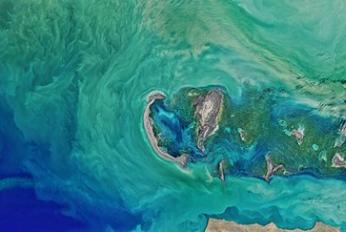 Recent Oil Spill Preparedness Developments in the Caspian Sea Regionпн, 04/23/2018 - 19:12Natural seeps and easily exploited surface deposits of crude oil on land have been utilized in the Caspian Sea region earlier than 300 BC. The modern-day picture is a region with oil reserves of global importance, facing a key challenge of the transportation of crude oil to markets. There has been considerable focus on devel
Recent Oil Spill Preparedness Developments in the Caspian Sea Regionпн, 04/23/2018 - 19:12Natural seeps and easily exploited surface deposits of crude oil on land have been utilized in the Caspian Sea region earlier than 300 BC. The modern-day picture is a region with oil reserves of global importance, facing a key challenge of the transportation of crude oil to markets. There has been considerable focus on devel
- Описание
Natural seeps and easily exploited surface deposits of crude oil on land have been utilized in the Caspian Sea region earlier than 300 BC. The modern-day picture is a region with oil reserves of global importance, facing a key challenge of the transportation of crude oil to markets. There has been considerable focus on developing oil spill preparedness in the Caspian Sea region. This has involved the governments, regional bodies, the oil industry and a range of other stakeholders and international organizations (notably UNEP, IMO and OSCE). This effort is in addition to the primary focus on preventing spills.
Countries are developing and implementing National Contingency Plans in order to have effective national response systems, which also act as the basis for regional cooperation.
- Attached documents
- Metadata
- Год
- 2015
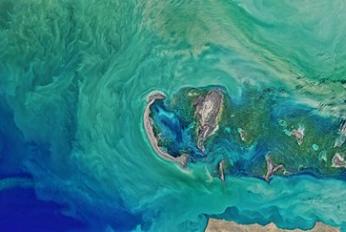 Climate Change Synthesis Report - 2014пн, 04/23/2018 - 19:02The Synthesis Report distils and integrates the findings of the three Working Group contributions to the Fifth Assessment Report (AR5) of the Intergovernmental Panel on Climate Change (IPCC), the most comprehensive assessment of climate change undertaken thus far by the IPCC: Climate Change 2013: The Physical Science Basis;
Climate Change Synthesis Report - 2014пн, 04/23/2018 - 19:02The Synthesis Report distils and integrates the findings of the three Working Group contributions to the Fifth Assessment Report (AR5) of the Intergovernmental Panel on Climate Change (IPCC), the most comprehensive assessment of climate change undertaken thus far by the IPCC: Climate Change 2013: The Physical Science Basis;
- Описание
The Synthesis Report distils and integrates the findings of the three Working Group contributions to the Fifth Assessment Report (AR5) of the Intergovernmental Panel on Climate Change (IPCC), the most comprehensive assessment of climate change undertaken thus far by the IPCC: Climate Change 2013: The Physical Science Basis; Cli- mate Change 2014: Impacts, Adaptation, and Vulnerability; andClima- te Change 2014: Mitigation of Climate Change. The SYR also incorpo- rates the findings of two Special Reports on Renewable Energy Sources and Climate Change Mitigation (2011) and on Managing the Risks of Extreme Events and Disasters to Advance Climate Change Adaptation (2011).
- Attached documents
- Metadata
- Год
- 2014
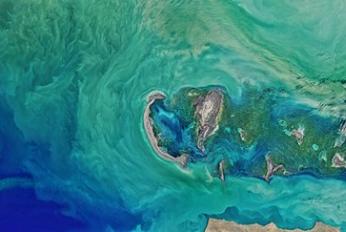 Biodiversity of the North East Caspian regionпн, 04/23/2018 - 18:44This brochure has been produced on behalf of the consortium developing the hydrocarbon deposits beneath the North East Caspian defined under the North Caspian Sea Production Sharing Agreement of 1997. The concession area lies in a region of rich biodiversity recognized as being of international importance for its wildlife,
Biodiversity of the North East Caspian regionпн, 04/23/2018 - 18:44This brochure has been produced on behalf of the consortium developing the hydrocarbon deposits beneath the North East Caspian defined under the North Caspian Sea Production Sharing Agreement of 1997. The concession area lies in a region of rich biodiversity recognized as being of international importance for its wildlife,
- Описание
This brochure has been produced on behalf of the consortium developing the hydrocarbon deposits beneath the North East Caspian defined under the North Caspian Sea Production Sharing Agreement of 1997.
The concession area lies in a region of rich biodiversity recognized as being of international importance for its wildlife, including several species that are classified as endangered. The widely varying conditions in the North East Caspian include extreme seasonal temperature variations, long-term sea level change, short-term sea surges and retreats, high levels of turbidity and sediment movement, ice cover in winter and scouring of the seabed by moving ice.
This dynamic environment presents challenges for those who live and work in the area. It also means that the fauna and flora on land and at sea, are adapted to a significant level of environmental stress from continually changing physical conditions.
- Attached documents
- Metadata
- Год
- 2015
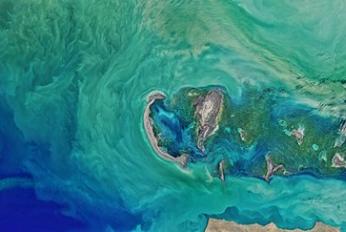 Synthesis and strategy for attracting and engaging the private sector, in particular the oil, gas and transport industry in the implementation of the Tehran Conventionпн, 04/23/2018 - 18:38The present synthesis paper will provide an overview of past and present private sector support, it will compare and summarize the five national analysis reports and on the basis of the specifics in each country will make suggestions for next steps to attract further engagement.
Synthesis and strategy for attracting and engaging the private sector, in particular the oil, gas and transport industry in the implementation of the Tehran Conventionпн, 04/23/2018 - 18:38The present synthesis paper will provide an overview of past and present private sector support, it will compare and summarize the five national analysis reports and on the basis of the specifics in each country will make suggestions for next steps to attract further engagement.
- Описание
The present synthesis paper will provide an overview of past and present private sector support, it will compare and summarize the five national analysis reports and on the basis of the specifics in each country will make suggestions for next steps to attract further engagement.
- Attached documents
- Metadata
- Год
- 2014
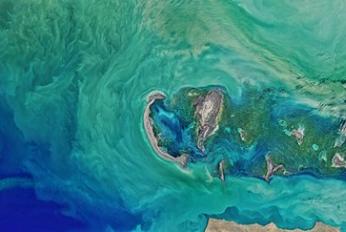 Article - Review of pollution sources and controls in Caspian Sea regionпн, 04/23/2018 - 18:24Daily extractions of crude oil and gas and transportation of them are the main pollution sources of the Caspian Sea. Many trucks for charring oil from ports along the Caspian Sea are considered as point and nonpoint sources along the seaboard. In addition, many ships, which are navigating in the Sea, are emitting pollution t
Article - Review of pollution sources and controls in Caspian Sea regionпн, 04/23/2018 - 18:24Daily extractions of crude oil and gas and transportation of them are the main pollution sources of the Caspian Sea. Many trucks for charring oil from ports along the Caspian Sea are considered as point and nonpoint sources along the seaboard. In addition, many ships, which are navigating in the Sea, are emitting pollution t
- Описание
Daily extractions of crude oil and gas and transportation of them are the main pollution sources of the Caspian Sea. Many trucks for charring oil from ports along the Caspian Sea are considered as point and nonpoint sources along the seaboard. In addition, many ships, which are navigating in the Sea, are emitting pollution to the Sea. Many cities and industries surround the Caspian Sea. Pollution from these cities and industries enter the Caspian Sea either directly or through rivers. The purpose of this paper is to look at the benefits of environmental management strategies in pollution prevention such as waste minimization and clean technologies. This minimizes the environmental problems due to waste generation and eliminates the cost of treatment and disposal of the waste. The benefits of the environmental management program along the Caspian Sea will ensure the clean water and the better environment of the Sea.
- Attached documents
- Metadata
- Год
- 2009
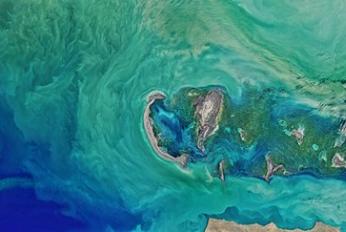 Overview of oil and natural gas in the Caspian Sea region - Reportпн, 04/23/2018 - 18:21This report analyzes oil and natural gas in the Caspian region, focusing primarily on the littoral (coastal) countries of the Caspian Sea (Russia, Azerbaijan, Kazakhstan, Turkmenistan and Iran). A discussion of Uzbekistan is also included. While not a Caspian coastal state, a considerable amount of Uzbekistan's territory, al
Overview of oil and natural gas in the Caspian Sea region - Reportпн, 04/23/2018 - 18:21This report analyzes oil and natural gas in the Caspian region, focusing primarily on the littoral (coastal) countries of the Caspian Sea (Russia, Azerbaijan, Kazakhstan, Turkmenistan and Iran). A discussion of Uzbekistan is also included. While not a Caspian coastal state, a considerable amount of Uzbekistan's territory, al
- Описание
This report analyzes oil and natural gas in the Caspian region, focusing primarily on the littoral (coastal) countries of the Caspian Sea (Russia, Azerbaijan, Kazakhstan, Turkmenistan and Iran). A discussion of Uzbekistan is also included. While not a Caspian coastal state, a considerable amount of Uzbekistan's territory, along with its energy resources, lies in the geological Caspian basins.
The combination of foreign investment and rising energy prices allowed the coastal countries to shift from diverting oil extraction for local use to supplying both regional and world oil markets. The ability of countries to export greater volumes of Caspian crude oil and natural gas will depend on how quickly domestic energy demand rises in those countries, how quickly they can build additional export infrastructure to global markets, and whether expensive projects to develop Caspian resources can attract sufficient investment.
- Attached documents
- Metadata
- Год
- 2013
 Concept of creating the Atlas of the Caspian Sea and its coasts - Presentation by Prof. Mammadovпн, 04/23/2018 - 17:52Presentation by Professor Ramiz M. Mammadov (Institute of Geography, NANA). The Institute of Geography of the Azerbaijan National Academy of Sciences and the Institute of Geography of the Russian Academy of Sciences have the honour to propose the development of the Atlas of the Caspian Sea (electronic and paper version), w
Concept of creating the Atlas of the Caspian Sea and its coasts - Presentation by Prof. Mammadovпн, 04/23/2018 - 17:52Presentation by Professor Ramiz M. Mammadov (Institute of Geography, NANA). The Institute of Geography of the Azerbaijan National Academy of Sciences and the Institute of Geography of the Russian Academy of Sciences have the honour to propose the development of the Atlas of the Caspian Sea (electronic and paper version), w
- Описание
Presentation by Professor Ramiz M. Mammadov (Institute of Geography, NANA).
The Institute of Geography of the Azerbaijan National Academy of Sciences and the Institute of Geography of the Russian Academy of Sciences have the honour to propose the development of the Atlas of the Caspian Sea (electronic and paper version), which aims to be a product of international scientific collaboration among the five Caspian states. The Atlas should serve the purpose of collecting and maintaining a comprehensive data on the state of the environment of the Caspian Sea and lay the scientific foundation for the environmental monitoring programme and implementation of other provisions of the Convention and its Protocols.
- Attached documents
- Metadata
- Год
- 2015
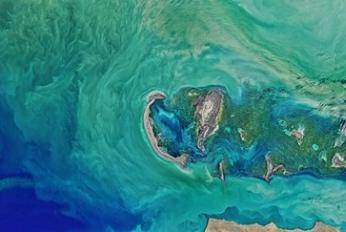 National Convention Action Plan NCAP 2012вс, 04/22/2018 - 20:06National Convention Action Plan NCAP of the five Parties - Year 2012+9
National Convention Action Plan NCAP 2012вс, 04/22/2018 - 20:06National Convention Action Plan NCAP of the five Parties - Year 2012+9
- Описание
National Convention Action Plan NCAP of the five Parties - Year 2012
- Attached documents
- Metadata
- Год
- 2012
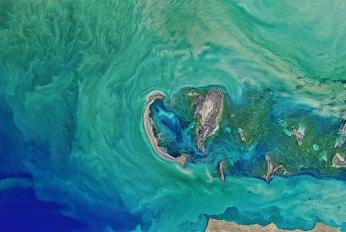 Article - Review of the status of invasive species, with special focus on the most invasive species Mnemiopsis leidyi A.Agassiz, 1865 and their effects on the Caspian ecosystemвс, 04/22/2018 - 16:13The main focus of review: To determine the Status of invasive species with special attention to the most aggressive invader Mnemiopsis leidyi in the Caspian Sea. Objectives: 1. To assess vectors, pathways of invasive species introduction, their composition and their role in the Caspian ecosystem. 2. To analyze seasonal an
Article - Review of the status of invasive species, with special focus on the most invasive species Mnemiopsis leidyi A.Agassiz, 1865 and their effects on the Caspian ecosystemвс, 04/22/2018 - 16:13The main focus of review: To determine the Status of invasive species with special attention to the most aggressive invader Mnemiopsis leidyi in the Caspian Sea. Objectives: 1. To assess vectors, pathways of invasive species introduction, their composition and their role in the Caspian ecosystem. 2. To analyze seasonal an
- Описание
The main focus of review: To determine the Status of invasive species with special attention to the most aggressive invader Mnemiopsis leidyi in the Caspian Sea.
Objectives:
1. To assess vectors, pathways of invasive species introduction, their composition and their role in the Caspian ecosystem.
2. To analyze seasonal and interannual dynamics of the Mnemiopsis leidyi population in the all areas of the Caspian Sea; its impacts on the Caspian ecosystem including food recourses (zooplankton) and fish stocks along with other emerging environmental threats such as increased nutrient load from the coast, structural and quantitative changes in phyto-and-zooplankton communities, the appearance of harmful algal bloom (HAB) in the Southern Caspian.
3. To prepare recommendations for follow-up actions on invasive species management: - for the protection and control of the Caspian Sea from any sources of accidental invasive species introductions - for possibility of biological control of invader Mnemiopsis leidyi.
The primary source of this Review has been national reports from every of the five Caspian littoral countries, which included results of national observations of ecosystem state and biodiversity of the Caspian Sea. But due to fragmental data of the national observations on invasive species
- Attached documents
- Metadata
- Год
- 2011
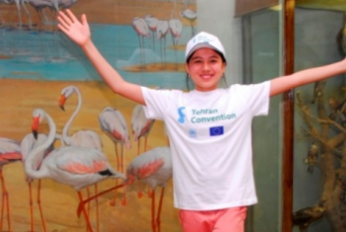 Celebration of Caspian Day in Turkmenistan: Final Reportвс, 04/22/2018 - 07:45Objectives of the project included the organization and performance of the coast-wide awareness campaign in Turkmenbashi and Awaza area devoted to the Caspian Sea Day celebration. The project was prepared and agreed with the program of Celebration with the Ministry of Nature Protection of Turkmenistan, which supposed to be h
Celebration of Caspian Day in Turkmenistan: Final Reportвс, 04/22/2018 - 07:45Objectives of the project included the organization and performance of the coast-wide awareness campaign in Turkmenbashi and Awaza area devoted to the Caspian Sea Day celebration. The project was prepared and agreed with the program of Celebration with the Ministry of Nature Protection of Turkmenistan, which supposed to be h
- Описание
Objectives of the project included the organization and performance of the coast-wide awareness campaign in Turkmenbashi and Awaza area devoted to the Caspian Sea Day celebration. The project was prepared and agreed with the program of Celebration with the Ministry of Nature Protection of Turkmenistan, which supposed to be held in hotel “Dayanch” on the Caspian coast. The events were planned for August 10-11, 2012. However due to force-major reasons, upon arrival of participants of the event to Turkmenbashy city, the organizers were asked to postpone the event. It was decided to perform it in Ashgabat at the premises of the Institute of Deserts. Due to the summer beach time, it was impossible to change tickets and go back to Ashgabat earlier. Thus the Caspian Day event was then again prepared and performed in Ashgabat.
- Attached documents
- Metadata
- Год
- 2012
 Technical-scientific meeting on the trans-boundary river basins Ural and Kigash - Astana - June 2016сб, 04/21/2018 - 12:40+12
Technical-scientific meeting on the trans-boundary river basins Ural and Kigash - Astana - June 2016сб, 04/21/2018 - 12:40+12- Attached documents
- Metadata
- Год
- 2016
 Kazakhstan's Second National Communication to the Conference of the Parties of the United Nations Framework Convention on Climate Changeсб, 04/21/2018 - 12:00The calculations were made using the MARKAL modeling tool and were based on strategic development plans for different economic sectors. The Communication assesses electricity saving potential in respect of energy efficiency and lower carbon intensity. It also reflects the possible costs related to GHG emissions reduction mea
Kazakhstan's Second National Communication to the Conference of the Parties of the United Nations Framework Convention on Climate Changeсб, 04/21/2018 - 12:00The calculations were made using the MARKAL modeling tool and were based on strategic development plans for different economic sectors. The Communication assesses electricity saving potential in respect of energy efficiency and lower carbon intensity. It also reflects the possible costs related to GHG emissions reduction mea- Описание
The calculations were made using the MARKAL modeling tool and were based on strategic development plans for different economic sectors. The Communication assesses electricity saving potential in respect of energy efficiency and lower carbon intensity. It also reflects the possible costs related to GHG emissions reduction measures in all economic sectors.
For the first time in Kazakhstan we have analysed the influence of climate change on forests and human health, as well as the data on mudflow activity and the change in glaciers. For climate change calculations, we used the data of the hottest decade (1995- 2005) combined with unified WMO methodology and climate change indices. Climate change scenaria were developed using the most recent ocean-atmosphere circulation models.
Nurgali Ashimov
Minister of Environment Protection Republic of Kazakhstan- Attached documents
- Metadata
- Год
- 2009
 Biodiversity Assessment for Kazakhstanсб, 04/21/2018 - 11:35The approach used in this assessment was to collect and analyze information on biodiversity and related areas through documentation searches and interviews with key individuals and organizations concerned with biodiversity, both throughout Kazakhstan and in Washington, D.C. (see Annex C, List of Persons Contacted). An extens
Biodiversity Assessment for Kazakhstanсб, 04/21/2018 - 11:35The approach used in this assessment was to collect and analyze information on biodiversity and related areas through documentation searches and interviews with key individuals and organizations concerned with biodiversity, both throughout Kazakhstan and in Washington, D.C. (see Annex C, List of Persons Contacted). An extens- Описание
The approach used in this assessment was to collect and analyze information on biodiversity and related areas through documentation searches and interviews with key individuals and organizations concerned with biodiversity, both throughout Kazakhstan and in Washington, D.C. (see Annex C, List of Persons Contacted). An extensive series of field trips was undertaken.
- Attached documents
- Metadata
- Год
- 2001
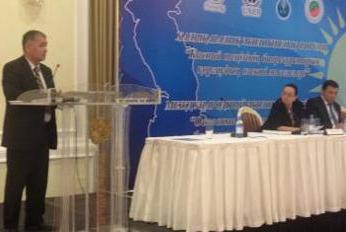 Aktau forum on the problems conservation of the Caspian Sea biodiversityсб, 04/21/2018 - 11:28The Forum is the first event held in the framework of theDay of Caspian Sea celebration . "Oil and gas offshore fields' development, which is beingcarried out at difficult geological conditions, increases man-caused impacts on environment of the region and creates real emergencies, including oil spills, as hydrocarbon depos+1
Aktau forum on the problems conservation of the Caspian Sea biodiversityсб, 04/21/2018 - 11:28The Forum is the first event held in the framework of theDay of Caspian Sea celebration . "Oil and gas offshore fields' development, which is beingcarried out at difficult geological conditions, increases man-caused impacts on environment of the region and creates real emergencies, including oil spills, as hydrocarbon depos+1
- Описание
The Forum is the first event held in the framework of theDay of Caspian Sea celebration .
"Oil and gas offshore fields' development, which is beingcarried out at difficult geological conditions, increases man-caused impacts on environment of the region and creates real emergencies, including oil spills, as hydrocarbon deposits are located in an ecologically sensitive area of the sea. The consequences of possible industrial accident capable of impacting the territories of neighboring countries", said Bapy.
According to his words, for monitoring of oil fields in thenorth-eastern part of the sea, there was established the North Caspian ecological base for oil spill response. "Ak Beren" blowout response group specialists are annually trained in the UK.
- Attached documents
- Metadata
- Год
- 2013
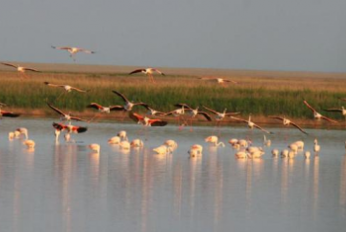 Akzhaiyk Reserve General Informationсб, 04/21/2018 - 11:16State Nature Reserve "Akzhaiyk" (Kazakh "Aқzhayyқ" memlekettіk tabiғi reserves) is located in the Makhambet Atyrau region, in the surrounding lands outside the city of Atyrau. It was created by the Government of the Republic of Kazakhstan on February 6, 2009 in the delta of the Ural River and the adjacent coast of the Caspia
Akzhaiyk Reserve General Informationсб, 04/21/2018 - 11:16State Nature Reserve "Akzhaiyk" (Kazakh "Aқzhayyқ" memlekettіk tabiғi reserves) is located in the Makhambet Atyrau region, in the surrounding lands outside the city of Atyrau. It was created by the Government of the Republic of Kazakhstan on February 6, 2009 in the delta of the Ural River and the adjacent coast of the Caspia
- Описание
State Nature Reserve "Akzhaiyk" (Kazakh "Aқzhayyқ" memlekettіk tabiғi reserves) is located in the Makhambet Atyrau region, in the surrounding lands outside the city of Atyrau. It was created by the Government of the Republic of Kazakhstan on February 6, 2009 in the delta of the Ural River and the adjacent coast of the Caspian Sea. [1] The Ural River Delta and the adjacent coast of the Caspian Sea is included in the list of wetlands of international importance. The reserve was the second Kazakh territory after the Tengiz-Korgalzhyn lake system, which went down in the list. The hydrological regime is characterized by a gradual rise the water level in the Ural River in the second half of April, with the transition in May-June in spring and summer, with a peak at the end of May or the first half of of June. After the first flood peak starts fast and then gradual decline, passing in August and September in the autumn low water.
- Attached documents
- Metadata
- Год
- 2012
 The Ural River Sturgeons: Population Dynamics, Catch, Reasons for Decline and Restoration Strategiesсб, 04/21/2018 - 11:06The Ural sturgeon yield-to-fishery relative to river discharge was the highest in the Caspian Sea till recently. The environmental conditions to secure natural reproduction are still satisfactory for successful sturgeon reproduction. However, nowadays the catch in all regional sturgeon species is negligible. The Ural sturgeo
The Ural River Sturgeons: Population Dynamics, Catch, Reasons for Decline and Restoration Strategiesсб, 04/21/2018 - 11:06The Ural sturgeon yield-to-fishery relative to river discharge was the highest in the Caspian Sea till recently. The environmental conditions to secure natural reproduction are still satisfactory for successful sturgeon reproduction. However, nowadays the catch in all regional sturgeon species is negligible. The Ural sturgeo
- Описание
The Ural sturgeon yield-to-fishery relative to river discharge was the highest in the Caspian Sea till recently. The environmental conditions to secure natural reproduction are still satisfactory for successful sturgeon reproduction. However, nowadays the catch in all regional sturgeon species is negligible. The Ural sturgeon population dynamics are analyzed along with some anthropogenic and natural factors affecting them. It is argued that legal overfishing (including all legal means of fish removal), based upon (a) faulty estimations of sturgeon stock and catch limits and (b) inappropriate fishery policies are the principal reasons for the stock decline in the Ural. The maintenance of the natural reproduction in the Ural is considered to be the primary strategy for the stock replenishment. If used at all, artificial propagation should be used only as an additional secondary option exclusively at the historical sturgeon habitats upstream the Ural river and not in the river delta, where the hatcheries are located now. Transboundary cooperation of basin countries with active inter- national involvement is essential to prevent further deterioration of the situation. ***The attached copy is furnished to the author for non-commercial research and education use, including for instruction at the author’s institution, sharing with colleagues and providing to institution administration. Other uses, including reproduction and distribution, or selling or licensing copies, or posting to personal, institutional or third party websites are prohibited. In most cases authors are permitted to post their version of the chapter (e.g. in Word or TEX form) to their personal website or institutional repository.***
- Attached documents
- Metadata
- Год
- 2008
Документ

The Legal Status of the Caspian Sea
Документ
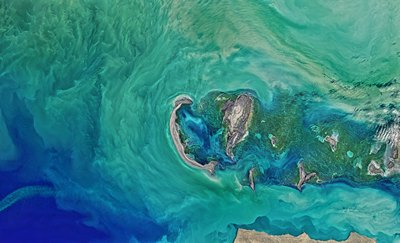
The Caspian Sea Encyclopedia
Документ
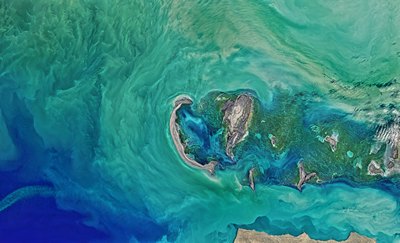
Article - Assessing the sensitivity of Caspian Kutum - Rutilus kutum- and the endangered Caspian trout - Salmo trutta caspius - to acute toxicity of nonylphenol
Документ
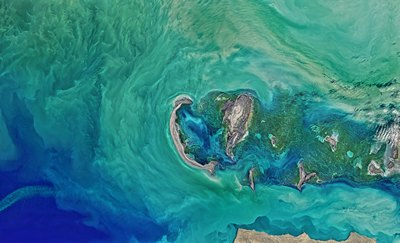
Article - Effects of Caspian Sea water level fluctuations on existing drains
Документ
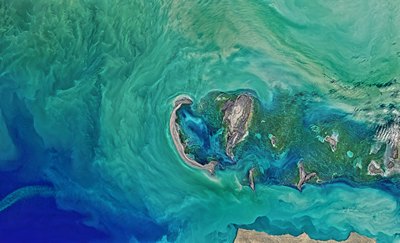
Recent Oil Spill Preparedness Developments in the Caspian Sea Region
Документ
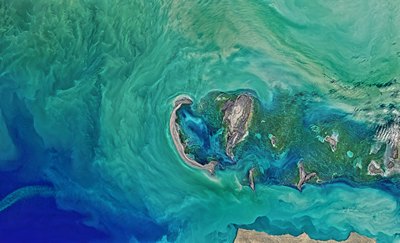
Climate Change Synthesis Report - 2014
Документ
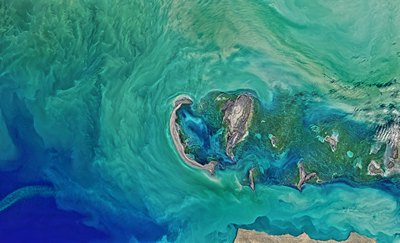
Biodiversity of the North East Caspian region
Документ
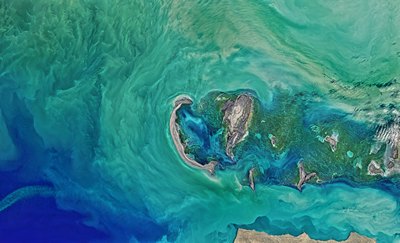
Synthesis and strategy for attracting and engaging the private sector, in particular the oil, gas and transport industry in the implementation of the Tehran Convention
Документ
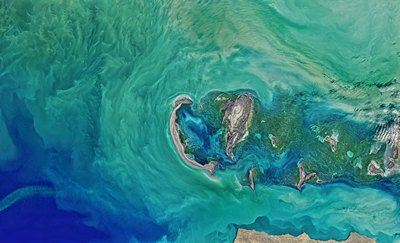
Article - Review of pollution sources and controls in Caspian Sea region
Документ
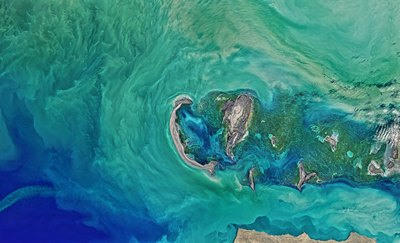
Overview of oil and natural gas in the Caspian Sea region - Report
Документ
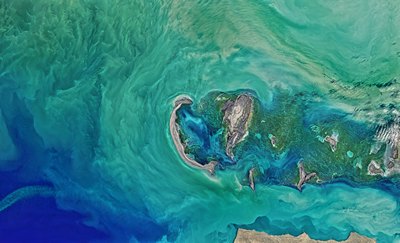
Concept of creating the Atlas of the Caspian Sea and its coasts - Presentation by Prof. Mammadov
Документ
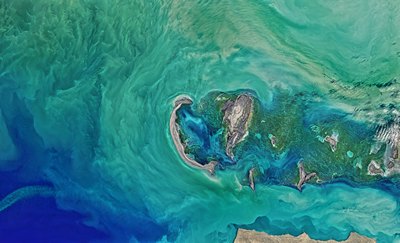
National Convention Action Plan NCAP 2012
Документ
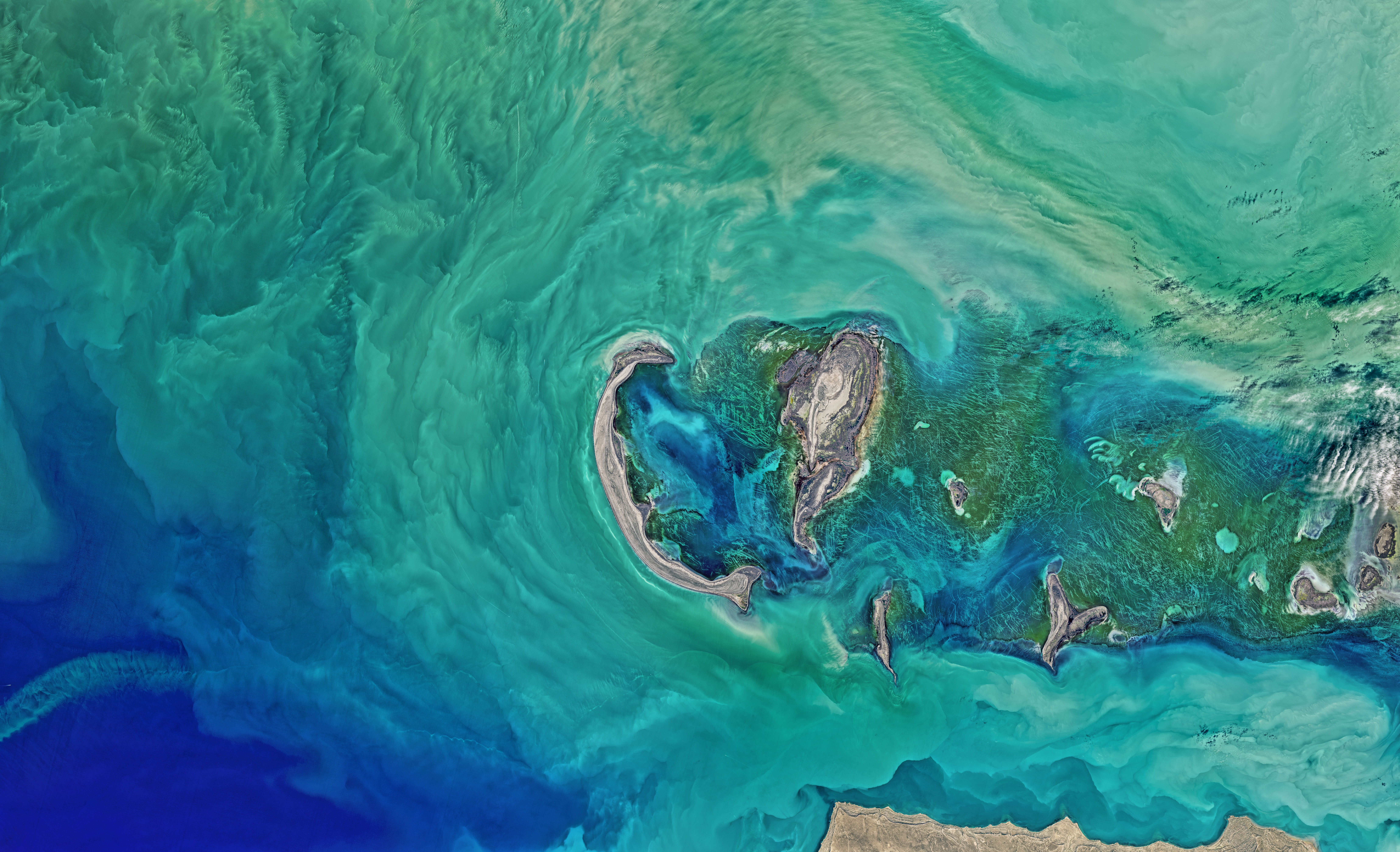
Article - Review of the status of invasive species, with special focus on the most invasive species Mnemiopsis leidyi A.Agassiz, 1865 and their effects on the Caspian ecosystem
Документ
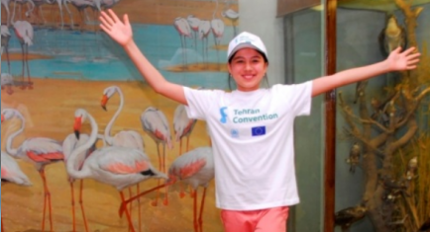
Celebration of Caspian Day in Turkmenistan: Final Report
Документ
Technical-scientific meeting on the trans-boundary river basins Ural and Kigash - Astana - June 2016
Документ
Kazakhstan's Second National Communication to the Conference of the Parties of the United Nations Framework Convention on Climate Change
Документ
Biodiversity Assessment for Kazakhstan
Документ
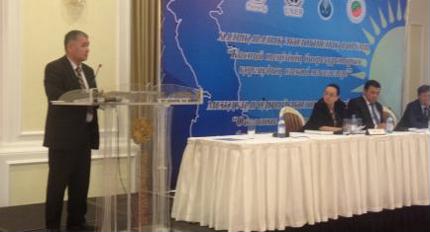
Aktau forum on the problems conservation of the Caspian Sea biodiversity
Документ
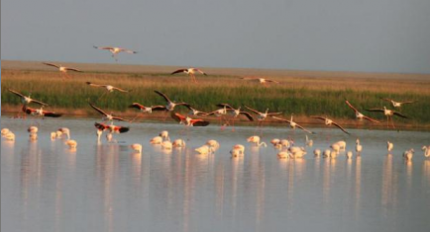
Akzhaiyk Reserve General Information
Документ
